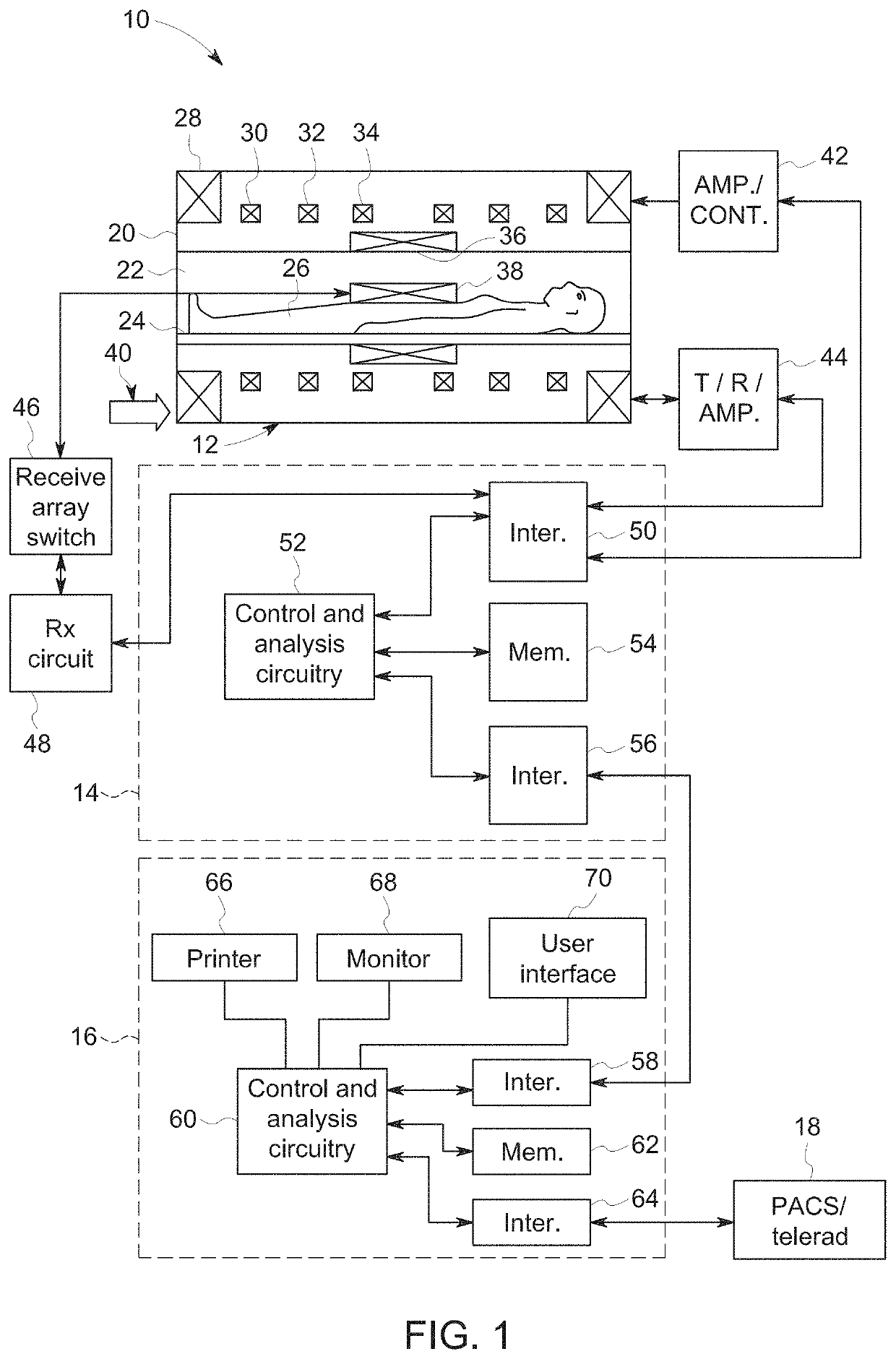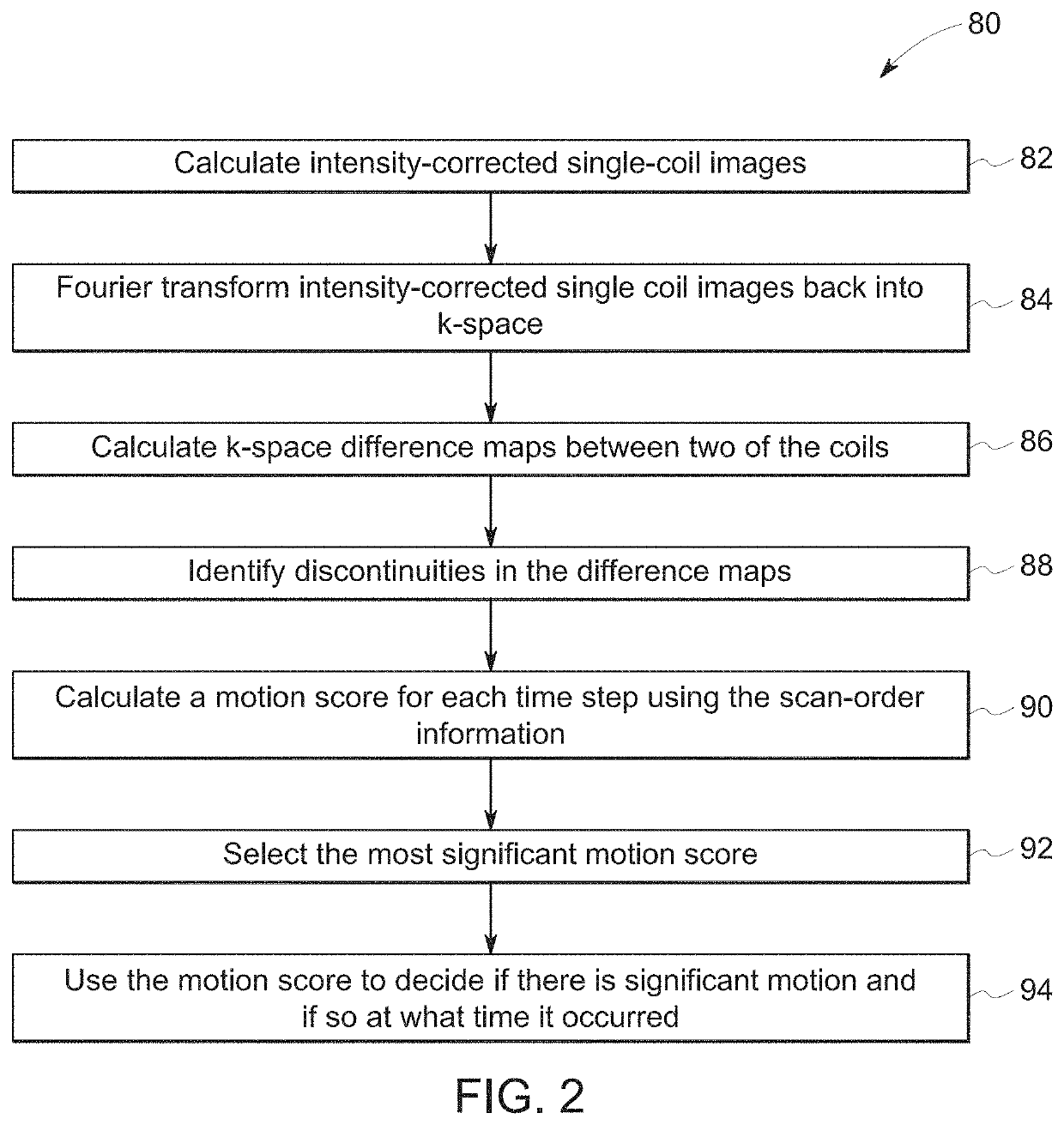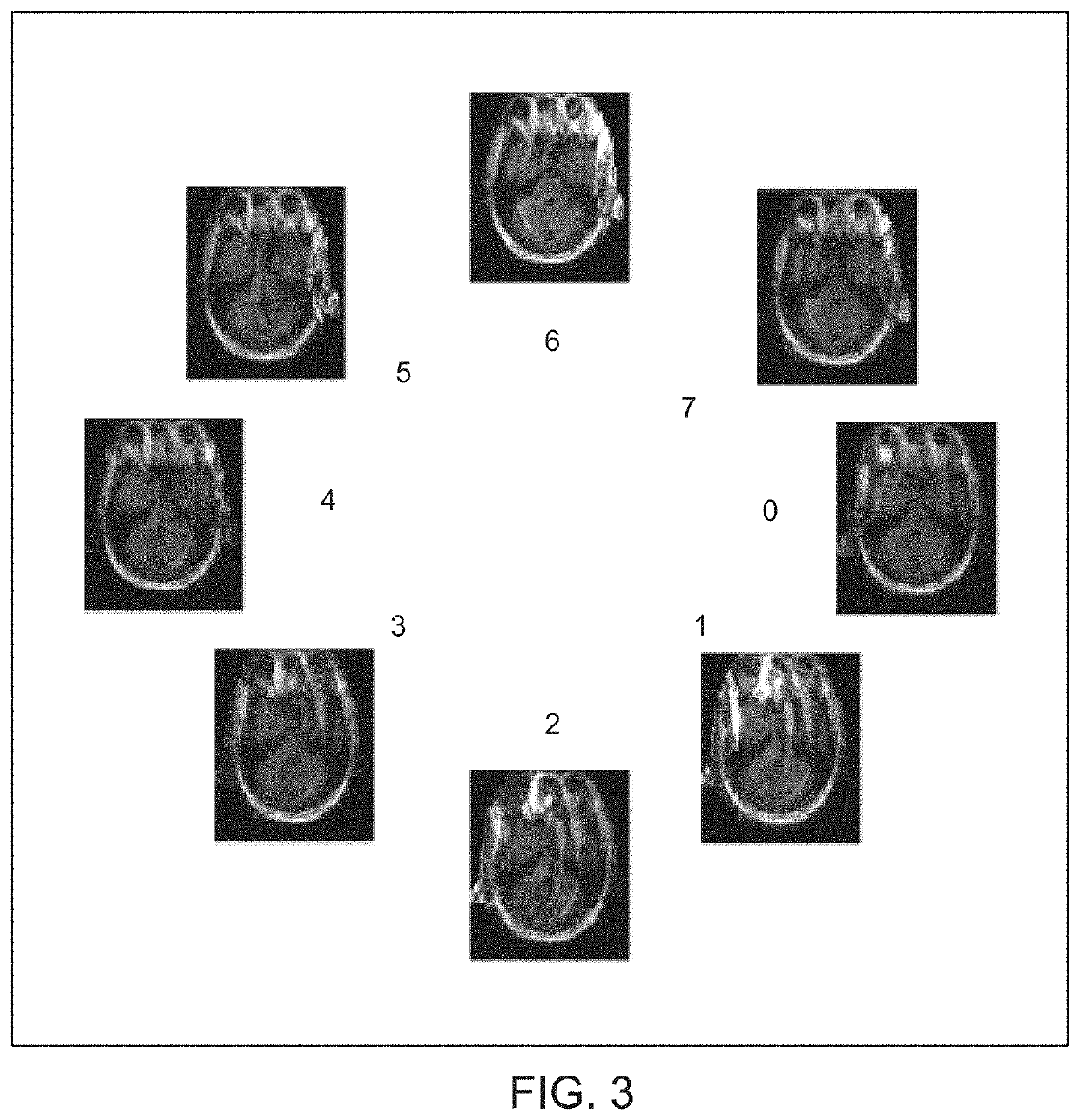MRI system and method for detection and correction of patient motion
a patient motion and magnetic resonance imaging technology, applied in the field of magnetic resonance imaging, can solve the problems of blurriness, artifacts, and other inconsistencies in patient motion, and add to cost and patient setup time, so as to improve the effect of motion
- Summary
- Abstract
- Description
- Claims
- Application Information
AI Technical Summary
Benefits of technology
Problems solved by technology
Method used
Image
Examples
Embodiment Construction
e scan, and aggregating a final motion state when motion is detected;
[0029]FIG. 23 is an embodiment of an algorithm for performing a scan, monitoring for motion during the scan, and adapting to the motion during the scan when motion is detected;
[0030]FIG. 24 is an embodiment of a method of reconstructing a motion-free image from motion-corrupted datasets; and
[0031]FIG. 25 is another embodiment of a method of reconstructing a motion-free image from motion-corrupted datasets.
DETAILED DESCRIPTION
[0032]One or more specific embodiments will be described below. In an effort to provide a concise description of these embodiments, all features of an actual implementation may not be described in the specification. It should be appreciated that in the development of any such actual implementation, as in any engineering or design project, numerous implementation-specific decisions must be made to achieve the developers' specific goals, such as compliance with system-related and business-related...
PUM
 Login to View More
Login to View More Abstract
Description
Claims
Application Information
 Login to View More
Login to View More - R&D
- Intellectual Property
- Life Sciences
- Materials
- Tech Scout
- Unparalleled Data Quality
- Higher Quality Content
- 60% Fewer Hallucinations
Browse by: Latest US Patents, China's latest patents, Technical Efficacy Thesaurus, Application Domain, Technology Topic, Popular Technical Reports.
© 2025 PatSnap. All rights reserved.Legal|Privacy policy|Modern Slavery Act Transparency Statement|Sitemap|About US| Contact US: help@patsnap.com



